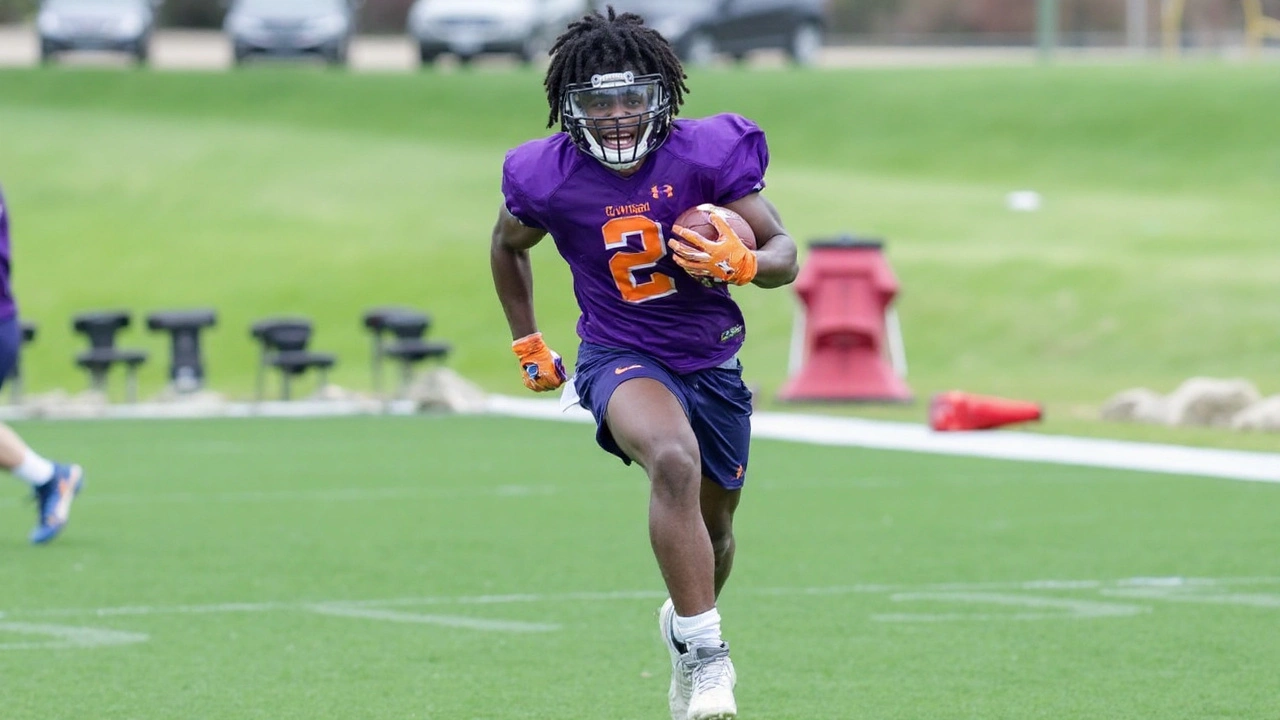Pressure, pads, and a reset in Natchitoches
Fifty plays. That’s the rough target for Saturday’s first spring scrimmage, and a clean barometer for where the Demons stand after opening camp this week. The number isn’t random—coaches want enough snaps to create stress, rotate personnel, and put mistakes on tape. For a program reshaping its identity, the scrimmage is a benchmark for Northwestern State football under second-year head coach Blaine McCorkle.
McCorkle’s message has been consistent since the first horn on Tuesday: play fast, play through contact, and get comfortable being uncomfortable. Staffers have leaned into high-pressure reps—backed-up series, sudden-change drives, and hurry-up moments that compress decision-making. The goal is simple: turn the hard parts of Saturdays into habits during the week.
The coaching staff isn’t hiding the theme. This spring is about physicality and response. That shows up in how periods are scripted—inside-run work to set a tone, perimeter blocks that must be finished, and contested catches that are judged not by flash but by ball security and yards after contact. Coaches have made it clear: if it doesn’t hold up when the pads pop, it won’t hold up in September.
The defense has grabbed early momentum. Junior linebacker Danny Sears has been a constant around the ball, cleaning up run fits and setting the standard for pursuit. Up front, the demand is to reset the line of scrimmage on first down and force teams behind the chains. The back end got a lift from midyear transfer cornerback Fernando Washington, whose experience shows in his patience at the line and leverage in phase. The message to the secondary is straightforward—win the down early, and the pass rush gets home late.
On offense, the checklist is equally blunt. Build the ground game first, protect the quarterback, and trim penalties. Coaches want cleaner pre-snap operation—more motion and formation shifts, fewer flags. The offensive line has been in the spotlight, from pad level in inside drills to combo blocks that carry through the second level. The staff also wants to see how ball carriers finish runs when a defender gets a hand on them at two yards. Do they fall forward? Do they move the pile? Those answers matter.
The format for the scrimmage keeps things real. Expect a mix of 1s vs. 1s and 2s vs. 2s, with situational football baked in: third-and-medium, red zone, two-minute, and goal-line. Special teams aren’t an afterthought—there will be live field-goal reps and coverage work to grade lanes, leverage, and tackling form. The script gives coaches the data points they want: explosives created and allowed, missed tackles, assignment busts, turnover margin, and penalties.
Evaluation cuts both ways in spring. Returners are judged on consistency and command; newcomers are measured on how fast they play without overthinking. The staff has emphasized rotation to prevent “camp heroes”—players who flash in low-pressure drills but fade in live, chaotic reps. Every rep will be charted, from leverage on the edge to how quickly a quarterback resets his feet under pressure.
The scrimmage is also a live showroom for recruits and families who’ve come to watch practice this week. They see how the staff coaches, how players respond to corrections, and how the program moves from drill to drill. McCorkle’s staff leans into that transparency. The subtext for prospects is clear: this is how we practice, this is how we play, and this is the standard.
What to watch and what comes next
There are no depth-chart declarations in March, but there are real scoreboard moments for position groups. For the front seven, it’s about first-down dominance. For the secondary, it’s about eliminating freebies—no free access, no busted zones. On offense, the mission is clarity: clean pre-snap communication, protection rules executed at full speed, and a run game that looks like an identity, not a suggestion.
- Run defense vs. intent: Can the defense win early downs and force third-and-long? The staff will zero in on run fits, edge setting, and how quickly the second level triggers.
- Sears as a tone-setter: The junior linebacker has become a voice in the huddle. How he organizes the front and adjusts to motion will show up on film.
- Washington on the perimeter: The transfer’s patience at the line will get tested against double moves and back-shoulder throws. Coaches want to see technique hold when fatigue hits.
- Offensive line cohesion: Expect grading on combo blocks, blitz pickups, and post-whistle discipline. Five good reps in a row matter more than one highlight pancake.
- Quarterback operation: Less about stats, more about command—tempo control, checks at the line, protection IDs, and ball placement on third down.
- Red-zone decisions: Field shrinks, windows tighten. Coaches will track touchdown rate, negative plays, and penalties that stall drives.
- Special teams reps: Kick coverage lanes, tackling form in space, and field-goal operation under a real play clock.
The staff also keeps a quiet scorecard on the details: substitutions with pace, communication between position groups, and how quickly a unit fixes a mistake on the very next snap. That “response time” is a spring emphasis. Blow an assignment? Correct it on the field and on the next rep, not just in Sunday’s film session.
Contact will be controlled but real. Expect periods of full-speed “thud” with limited live tackling, then short live sequences in goal-line or short-yardage to test pad-level and toughness. Player safety is a priority, but the staff believes you learn who you are when the space gets tight and the decisions get faster.
The Delaney Bowl sits on the calendar as the public checkpoint for this build. Between now and then, the plan is straightforward: clean up penalties, stack physical practices, and sharpen situational football. The team’s 2025 slate won’t do them any favors—nonconference tests out of the gate and a league that punishes soft edges—so the staff wants answers in April, not August.
There’s also a long-game piece. Spring is where the core travelers separate from the pack and where special teams depth gets built. It’s where a young safety learns to drive a route in quarters instead of peeking in the backfield, and where a tackle learns that a late hand reset can be the difference between a quarterback hit and a third-down conversion.
For players, Saturday is part test, part opportunity. For coaches, it’s a ledger—who plays fast, who finishes blocks, who shows up in the final ten snaps when legs are heavy. For recruits and parents along the fence line, it’s a window into a program leaning into a physical identity and taking the rebuild one honest rep at a time.

